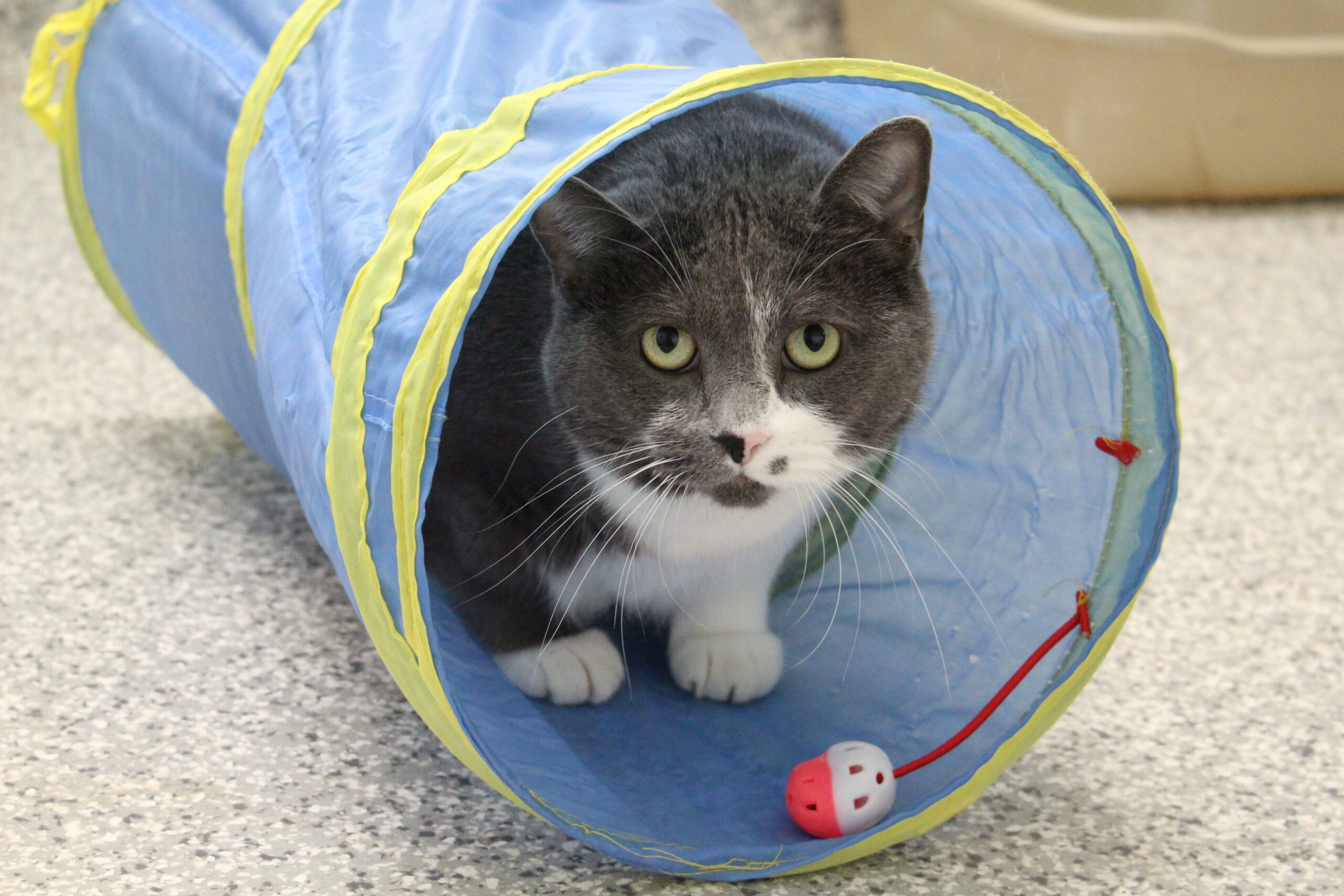How to train cats to do agility courses
by Ontario SPCA and Humane Society | Cat Care | September 21, 2023

In North America, when you think about pet agility courses, you may think only of dogs jumping over bars and through hoops. In reality, many other pets can also do agility courses, and do them well!
In today’s blog, we discuss agility courses, and how your cat can be trained to do them.
Finding motivation
When it comes to training in agility, dogs are motivated by external sources such as food, toys and social praise or attention.
Cats, on the other hand, get rewarded for things they do for themselves and are more internally motivated. Despite this, you should be able to train any animal if you can find out one thing: what motivates them?
For cats, that thing could be a type of food or treat, like tuna or chicken. It could also be a special toy, or a cat nip toy that motivates them. Keep in mind you only need to give them a little taste for this training – you’re going to be giving a lot of rewards, so you don’t want to give your cat too much.
Training
Once you know their motivation, you can start adjusting their behaviour in tiny steps. Cats can get bored easily, so it’s important to keep things interesting while training.
Another thing that’s important is to give a treat immediately so it’s clear to the cat what they are being rewarded for. If the treat is given even a few seconds later, the cat may associate the reward with something else entirely.
You could also use clicker training to work with your cat. Check out this blog for more information.
Health benefits
There are many health benefits to training your animals in agility. The first benefit is aerobic; it burns off your animal’s extra calories. With this exercise, you’re also keeping their muscle tone strong by keeping the joints moving so they don’t stiffen up.
This is also a great activity for mental stimulation, which will keep your cat happier, and less likely to get into trouble in other areas.
How do I know if my cat can do agility courses?
It’s important to speak to your veterinarian before starting any exercise program with your pet. However, generally, most cats can learn agility courses, but it comes down to the individual, and if you’re able to find out what motivates them. To help your cat succeed, always start training in a secure area of the home where your cat feels comfortable.
A key to training is to be very patient and to recognize everything takes time. For example, if you’re trying to get your cat to run through a tube, you can start with the tube rolled up, so it’s just a hoop your cat steps through. From there, you can open it an inch at a time until your cat can go through it.
For more information on cat agility training, head to the ICAT (International Cat Agility Tournaments) website.
Categories
Testimonial
As an animal lover all the work you do
As an animal lover all the work you do to help ensure that every dog and cat can find their forever home that is filled with love is greatly appreciated.
